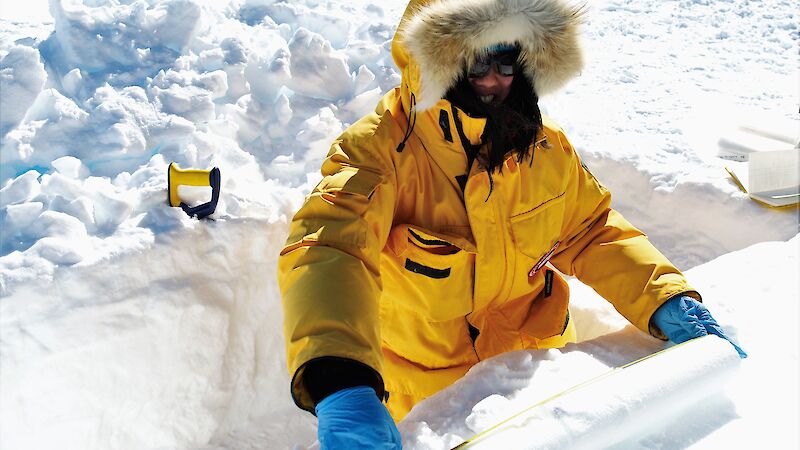The Australian Antarctic Division (AAD) will embark on one of its most ambitious summer seasons ever, with three ships and a range of aircraft being used to support expeditions.
The 2021-2022 summer season will see about 500 expeditioners travel south to undertake research or support our scientists as part of the Australian Antarctic Program.

The nation's new icebreaker, RSV Nuyina, is scheduled to arrive in Hobart in October and will require a period of commissioning before the vessel can travel to Antarctica.
AAD Director Kim Ellis said an ice-strengthened cargo vessel will also be chartered and potentially a second icebreaker to ensure the season's big science project can be supported.
"This summer we are transporting 800 tonnes of equipment and machinery to Casey research station to support an expedition to drill an ice core dating back more than a million years," Mr Ellis said.
This includes 20 sleds, living and medical vans, generators and fuel in preparation for the traverse 1300 kilometres inland to a remote drill site in 2022-23.
"In order to be able to deliver this cargo and support resupply missions at our four stations in Antarctica and on sub-Antarctic Macquarie Island we will use at least one, and potentially two, other vessels.
"This will give us flexibility to deal with a range of scenarios and contingencies over the coming season," he said.
AAD Chief Scientist Dr Nicole Webster said the ice core project is a critical bit of the climate puzzle.
"We are aiming to recover Antarctica's oldest continuous ice core, beyond 1.2 million years, from 2,800 metres deep within the ice cap," Dr Webster said.
Trapped within this ice are tiny bubbles of air and chemicals from this period in time.
"This will give us a snapshot of the Earth's climate and atmospheric composition from when ice age cycles occurred at a pace of 41 thousand years, before slowly shifting to a 100 thousand year gap."
"Measurements on the ice core we retrieve could help us better predict future stability of the climate system and the processes involved in transitioning between different climate states."
"It's so exciting for the Australian Antarctic Division team to be actually testing the drill in specially prepared ice at Kingston today."
The drill will be packed up this week and flown south later in the year.
This summer there will be 10 Airbus A319 and six C17-A cargo flights to Australia's Wilkins Aerodrome this summer, with the first flight scheduled in November.
Ski-equipped planes will also be used to transfer expeditioners between stations and into the field for science and operational tasks.
RSV Nuyina will arrive in Hobart on October 16 and the Division is continuing to consider refuelling options, including at Self's Point or in port.
The new Antarctic icebreaker, RSV Nuyina, has been designed to fit within the length and height limitations set out by TasPorts for transiting under the Tasman Bridge.
Simulation testing continues with TasPorts to confirm the suitable operating parameters for the Nuyina's Tasman Bridge transit.
The focus of this testing is on assessing the impact of 'windage' - the surface area of the ship exposed to the force of the wind - and the effect this has when undertaking the transit in various weather conditions.
The Australian Antarctic Division has a number of refuelling options, which are in many circumstances more efficient than a bridge transit to Self's Point fuel terminal.






